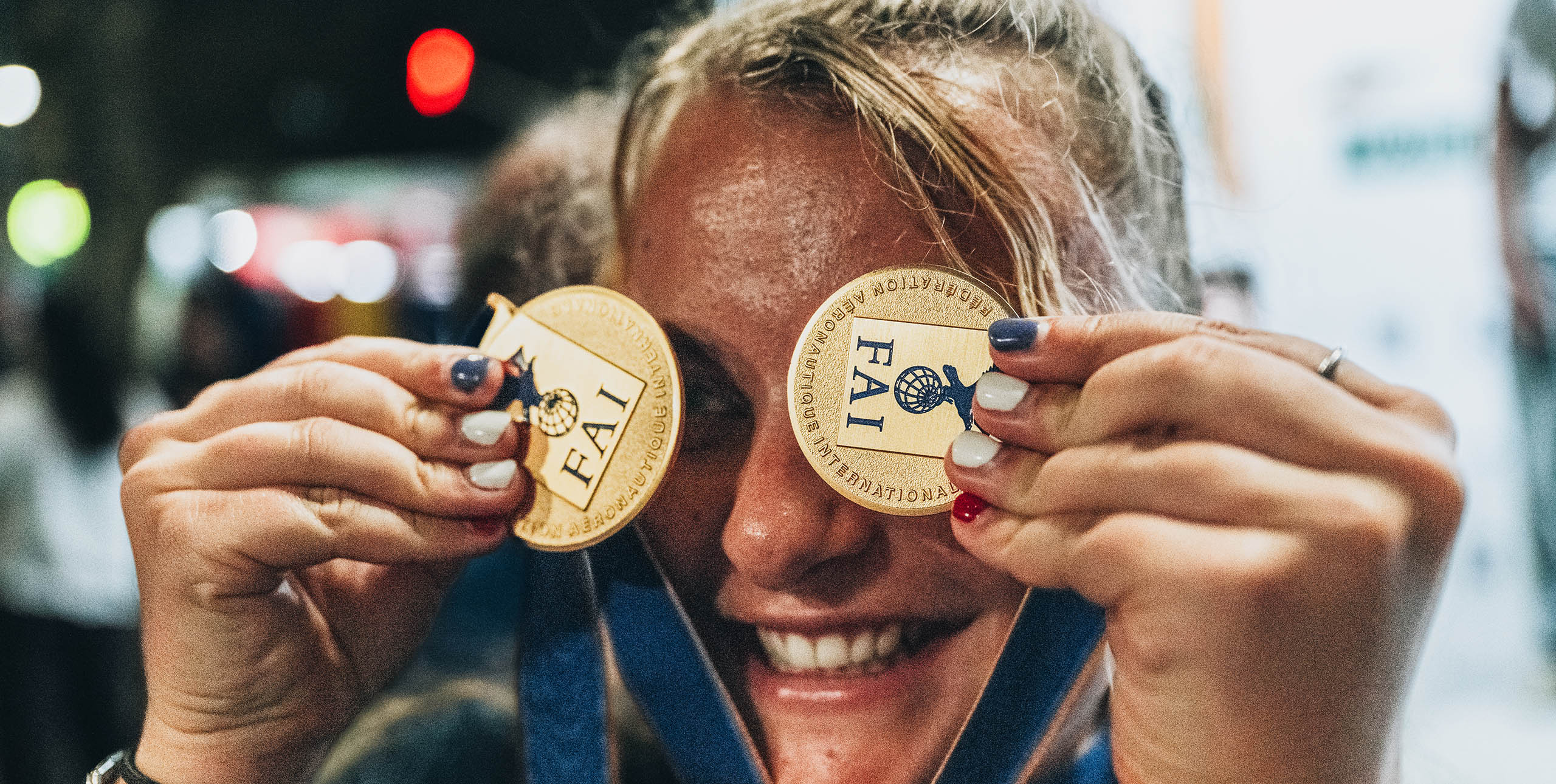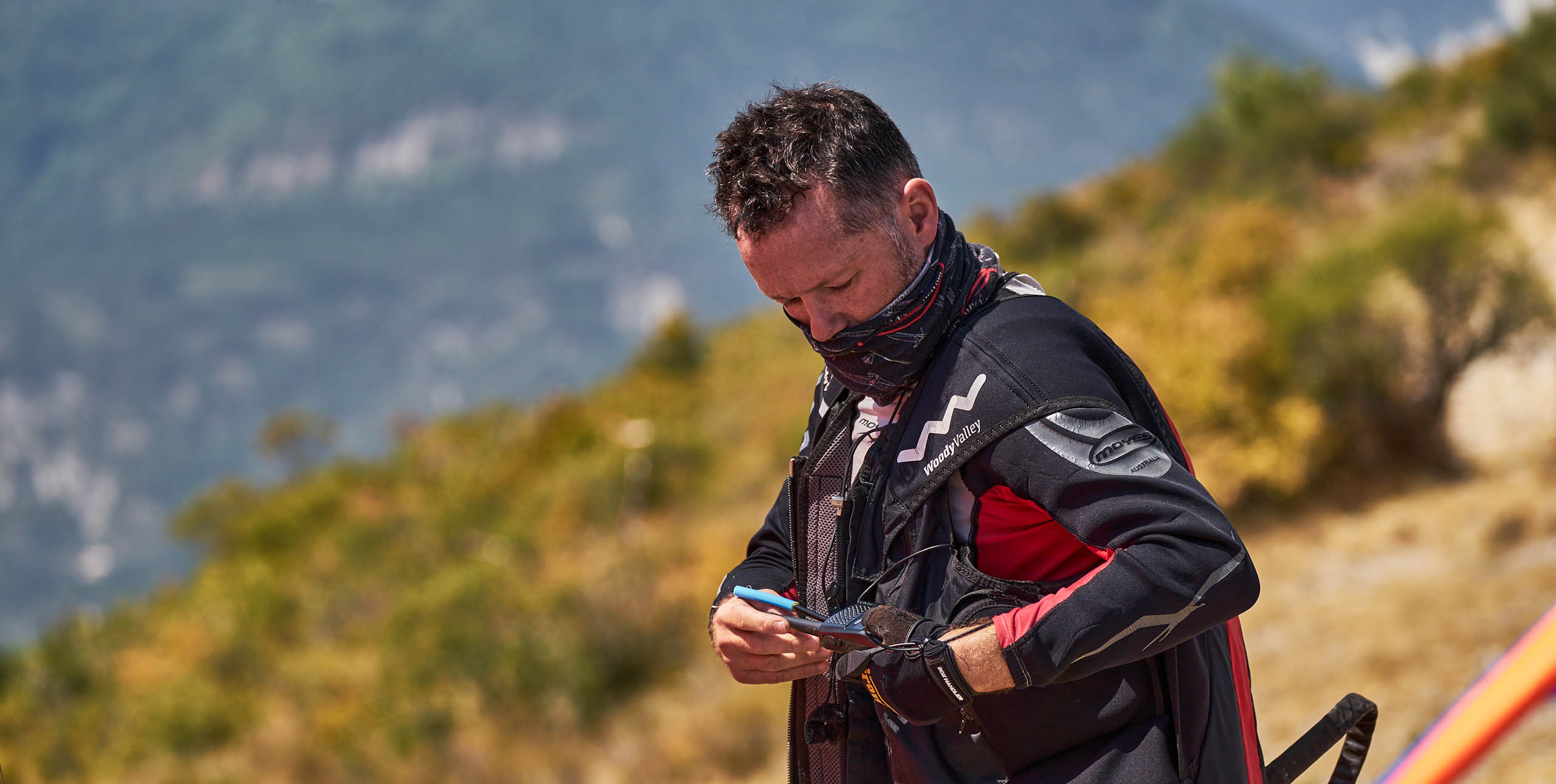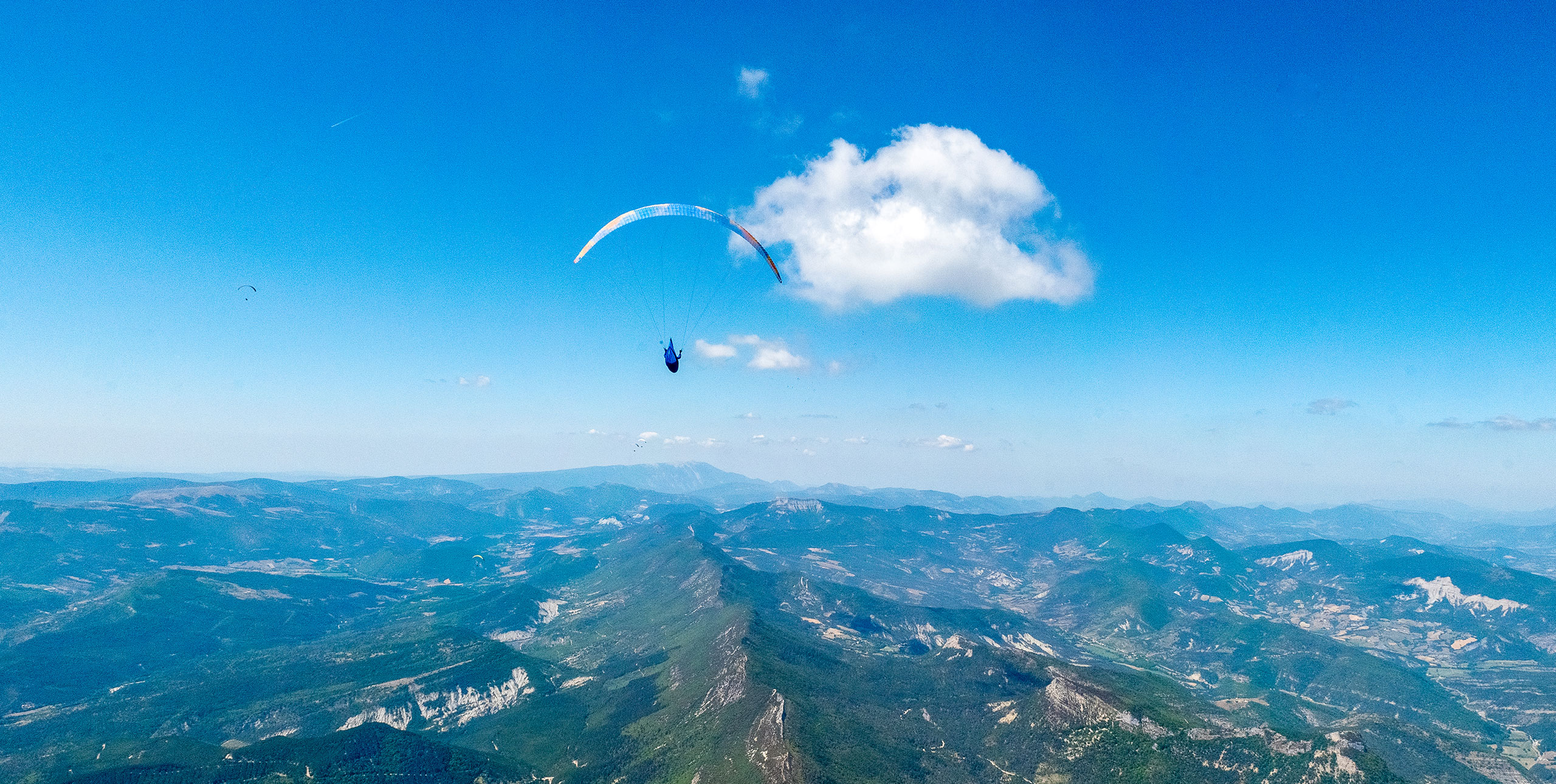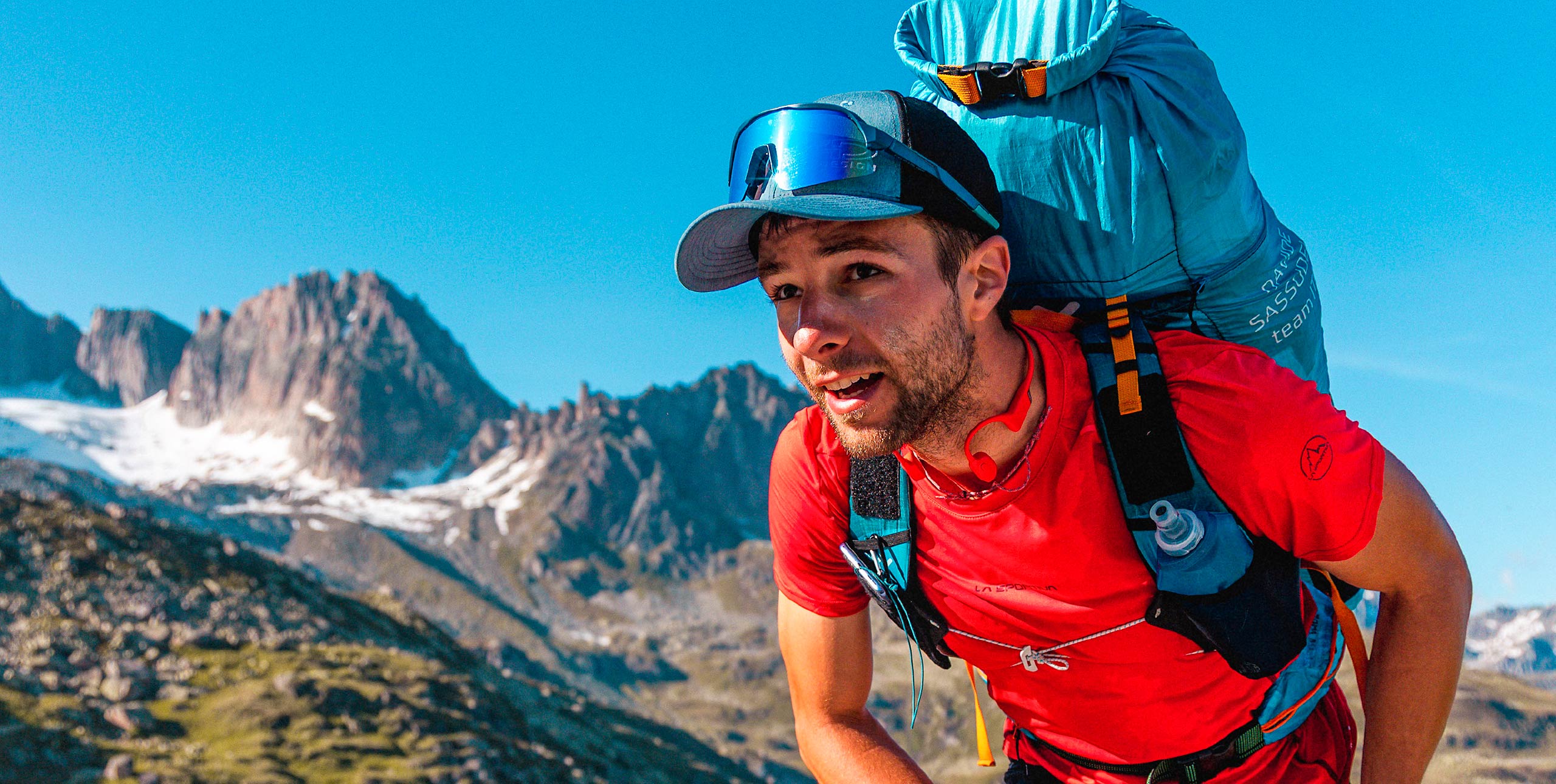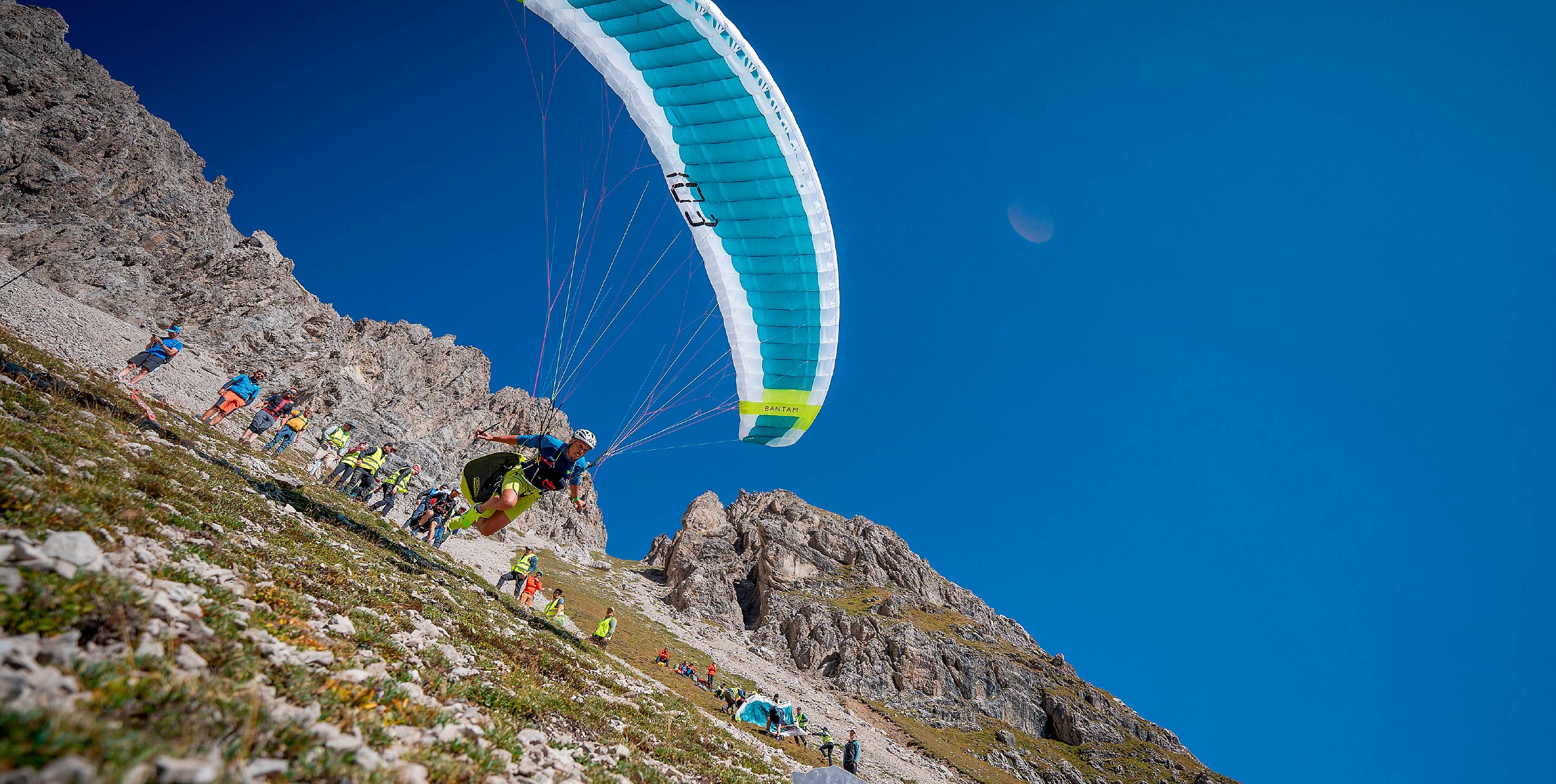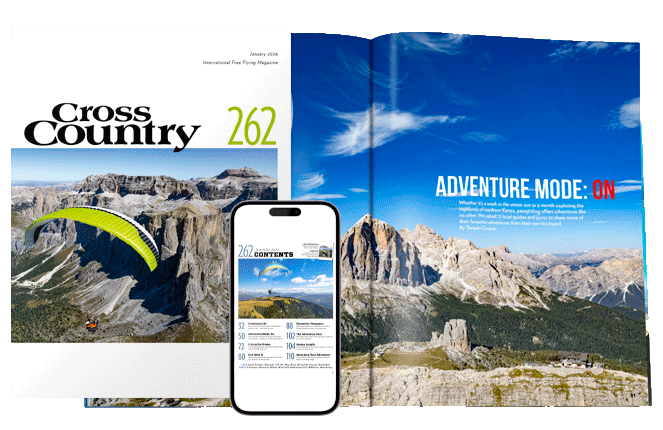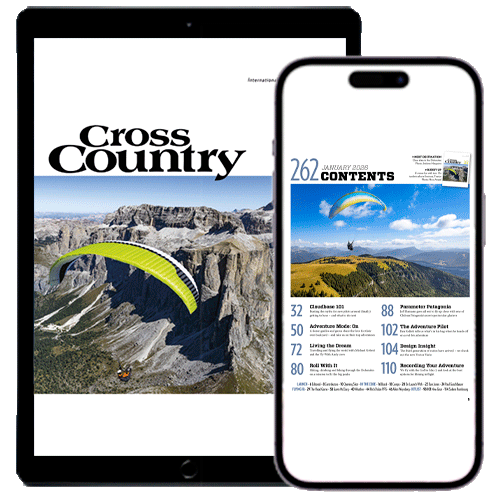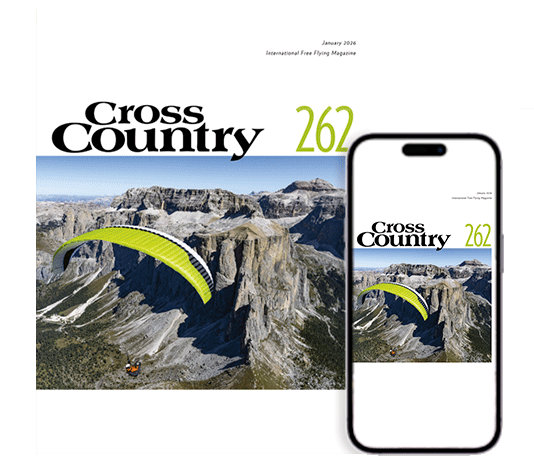Christian Ciech at the Pre-World Championships in 2008 in Laragne, France
In the second part of his series on cross country and competition flying, Christian Ciech lifts the veil on some of the strategies and techniques needed for flying faster without ending up on the ground prematurely. Published in Cross Country in 2003, updated online January 2011
Now that we have ’visited the neighbourhood’ and explored the area around our local sites, it’s time to widen our horizons and start to make more challenging flights. I use the term ‘challenging’ and not ‘long’ because although many believe that ‘the longer the flight, the nicer’, a flight with limited kilometres, but with major technical difficulties is so much more satisfying. For a more ‘challenging’ flight you will probably have to fly in the hours with maximum thermal activity. In other words, a three or four hour flight during the afternoon, between early spring and late summer.
Whilst still on launch, a pilot with a little bit of experience should be able to evaluate fairly accurately what conditions they will find during their flight, simply by looking at the sky. They will therefore have a good idea of what to expect once airborne, and what routes may or may not be possible.
Once you take off, and whilst in the first thermal, you should try to note the average strength of the climb. Note that the climb rate you get in that first thermal is already a very good indication of the rates of climb you are likely to encounter later, especially in the early stages of your flight.
Should there be any scattered cumulus, you need to observe their development, especially those visible along your intended route. Watching the progress of other pilots ahead of you also helps to give you a better idea of what quality and quantity of lift to expect.
Having done this, you can decide what speed to maintain in your next glides. The stronger the thermals are, the faster you can glide. Using the last generation of topless hang gliders as an example, it is very rare that your optimum speed between thermals will be less than 55-60km/h.
On days where the average climb rates are around 2.5m/s, it’s usual to glide at around 65km/h. For rates of 4m/s, the optimum speed approaches 75km/h, and in stronger thermals it’s possible to reach even 80-85km/h.
These values need to be treated with caution since they depend on many other factors. Some of them are: the type of wing, the weight loading on the wing, the direction and the intensity of the wind, and last but not least the altitude at your disposal (as strong as the next thermal might be, you need to reach it before your feet hit the ground).
Once you have decided what average speed you need to maintain, you now only need to search for the best route in order to lose as little altitude as possible, and make fastest progress.
Of great importance in choosing your route is the ability to interpret the cumulus and the morphology of the ground ahead. Choosing the optimum route generally depends far more on the pilot’s experience than on any theoretical preparation. It is not always easy though, to decide whether you should follow a cloud street. Although it allows fast, efficient travel, it could force you into a route deviation.
Generally speaking, it is better to stay above the supporting line of hills, even if this means adding a few extra kilometres to your route. Taking a route along the supporting hills usually ensures you reach the next thermal, and allows you to fly faster.
This choice becomes “compulsory” if you are flying with a side wind, and when your street of cumulus is too far windward of your desired direction. I think there is a challenge for everyone in this type of flight (not too long, but difficult and very intense). Especially if you’re not only aiming to complete the flight, but also trying to complete it in the shortest time possible.
This exercise, which initially appears to be exclusively about flying fast, and only aimed at competition pilots, is very useful for learning about the weather conditions and how the terrain affects conditions, as well as learning a lot about the glide characteristics of your wing. In other words, it helps you to feel safer in flight and to understand that the glide efficiency does not only depends on the air, but also on the flight path that you take (the fastest distance in flight between two points is not always a straight line).
Furthermore, this exercise will help improve your capacity for evaluating atmospheric changes and help you make quick decisions, which are otherwise often delayed until the thermal ends.
• Got news? Send it to us at news@xccontent.local
Subscribe to the world’s favourite hang gliding and paragliding magazine


